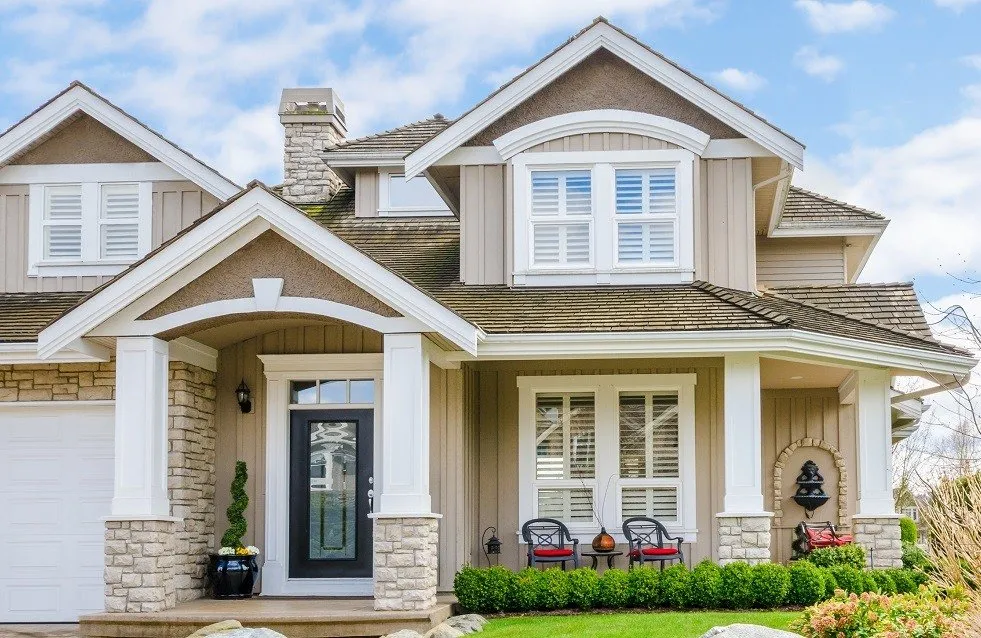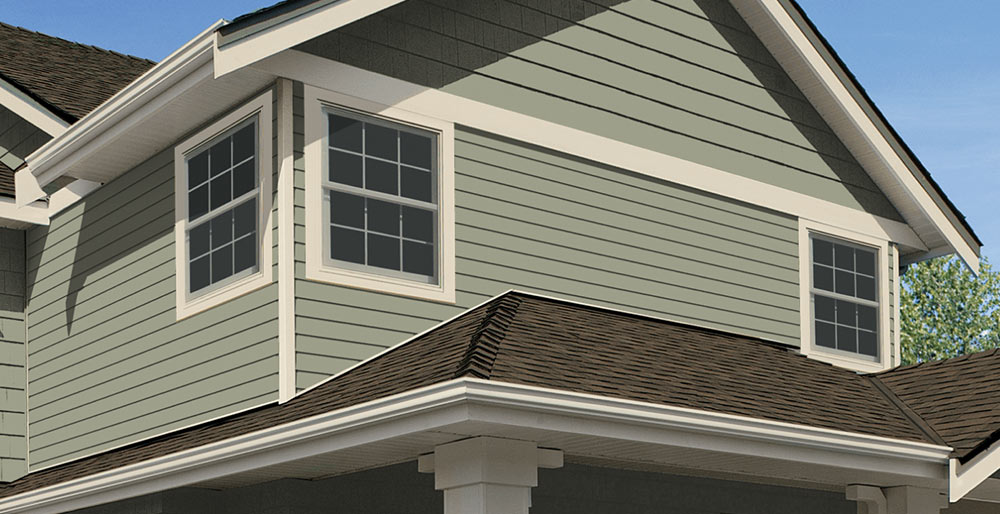Choosing the right color palette for your home exteriors is one of the most important decisions you can make as a homeowner. The exterior is the first thing people see, and it sets the tone for your property’s overall style and curb appeal. A carefully selected palette can elevate your home’s charm, highlight architectural features, and even influence its perceived value. With so many color options and design trends available, selecting the perfect combination may seem overwhelming. But by considering a few key aspects, you can make a confident and stylish choice.

Consider the Architectural Style of Your Home
Your home’s architectural style plays a significant role in determining which colors will work best. Traditional homes, such as Colonial, Victorian, or Craftsman, often lend themselves to classic, muted color schemes. A Victorian home may embrace deeper, more vibrant tones, while a Colonial might look best with crisp whites and subtle contrasts. Modern or contemporary homes, on the other hand, often benefit from bold contrasts and minimalist palettes that highlight clean lines and geometric design.
Understanding the roots of your home’s design helps you choose colors that feel authentic and harmonious. Matching the palette to the architectural style doesn’t mean you can’t be creative—it simply ensures that the final result feels cohesive and true to the structure’s character.
Work With the Natural Surroundings
Nature can be a powerful guide when selecting exterior colors. Take note of the colors present in your surroundings—trees, plants, rocks, and even the climate can influence what tones will feel natural and inviting. A home in a wooded area may benefit from earthy greens, browns, and tans, while a beachside property could feel more at home with sandy neutrals, whites, and light blues.
Considering your landscape ensures that your home blends well with its environment rather than clashing with it. This approach helps create a seamless transition from the natural world to the man-made structure, enhancing the property’s overall harmony and visual impact.
Factor in the Roof and Fixed Elements
Some elements of your home are difficult and expensive to change, such as the roof, brickwork, or stone features. These elements should be considered as part of your color palette. Look closely at the undertones in your roof—whether they lean toward warm or cool shades—and choose complementary colors for the siding, trim, and accents.
Matching or contrasting these fixed elements in a thoughtful way allows you to create a palette that feels balanced and intentional. If your roof has a warm, reddish undertone, for example, warm beige or taupe siding might enhance the overall look. A cool-toned roof could pair well with grays or muted blues.
Play With Light and Shadow
Natural light can dramatically change the way a color appears throughout the day. Colors that seem vibrant in direct sunlight may appear dull or washed out under overcast skies or in shadowy areas. It’s important to test your color choices by applying samples directly to your home’s exterior and observing how they look in different lighting conditions.
The orientation of your home also plays a role. A south-facing home may get intense sunlight, making darker colors appear brighter. North-facing homes might benefit from lighter colors that help brighten up the appearance. Understanding how light interacts with your exterior surfaces helps you avoid surprises after painting and ensures your chosen palette maintains its appeal in all conditions.
Find the Right Balance With Accents and Trim
 The main body of your home should set the tone, but trim and accent colors provide the opportunity to add personality and detail. Accent colors are often used on doors, shutters, and decorative elements, while trim is typically applied around windows, corners, and rooflines. Choosing the right contrast between the body color and the trim can add depth and sophistication.
The main body of your home should set the tone, but trim and accent colors provide the opportunity to add personality and detail. Accent colors are often used on doors, shutters, and decorative elements, while trim is typically applied around windows, corners, and rooflines. Choosing the right contrast between the body color and the trim can add depth and sophistication.
Using a darker shade for the body and a crisp white trim creates a classic, clean look. Reversing this—lighter body color with darker trim—can make a bold statement. Accent colors offer a chance to inject creativity and can be used sparingly to add charm without overwhelming the design.
Don’t Forget the Emotional Impact of Color
Color has the power to evoke emotion and set a mood. Soft, neutral palettes often evoke feelings of calm, elegance, and tradition. Bold colors like navy, charcoal, or deep green can suggest sophistication, strength, or modernity. Lighter shades such as pastels or creams can make a house feel airy and welcoming.
Think about the impression you want your home to make. Do you want it to feel cozy and inviting? Elegant and timeless? Bold and contemporary? Matching the emotional tone of the color palette with your personal taste and lifestyle can help you feel more connected to your home and satisfied with your choice.


 The first factor to consider is your local climate. Some materials perform better in hot, dry areas, while others are better suited to cold or rainy environments. For instance, asphalt shingles may work well in mild climates, but metal roofing is ideal for areas that experience heavy snowfall because it allows snow to slide off easily. In humid or coastal areas, resistance to mold, mildew, and salt corrosion is essential. Considering how a material will hold up in your specific region ensures your investment will last longer and require fewer repairs.
The first factor to consider is your local climate. Some materials perform better in hot, dry areas, while others are better suited to cold or rainy environments. For instance, asphalt shingles may work well in mild climates, but metal roofing is ideal for areas that experience heavy snowfall because it allows snow to slide off easily. In humid or coastal areas, resistance to mold, mildew, and salt corrosion is essential. Considering how a material will hold up in your specific region ensures your investment will last longer and require fewer repairs. Cost is often a deciding factor for many homeowners. It’s crucial to balance your budget with your long-term goals. While asphalt shingles are typically the most affordable upfront, they may need to be replaced more frequently than more expensive alternatives. On the other hand, metal, slate, or clay roofs have higher initial costs but offer greater longevity, energy savings, and lower maintenance expenses. Don’t forget to factor in costs such as labor, permits, and any structural reinforcements when planning your reroofing project.
Cost is often a deciding factor for many homeowners. It’s crucial to balance your budget with your long-term goals. While asphalt shingles are typically the most affordable upfront, they may need to be replaced more frequently than more expensive alternatives. On the other hand, metal, slate, or clay roofs have higher initial costs but offer greater longevity, energy savings, and lower maintenance expenses. Don’t forget to factor in costs such as labor, permits, and any structural reinforcements when planning your reroofing project.